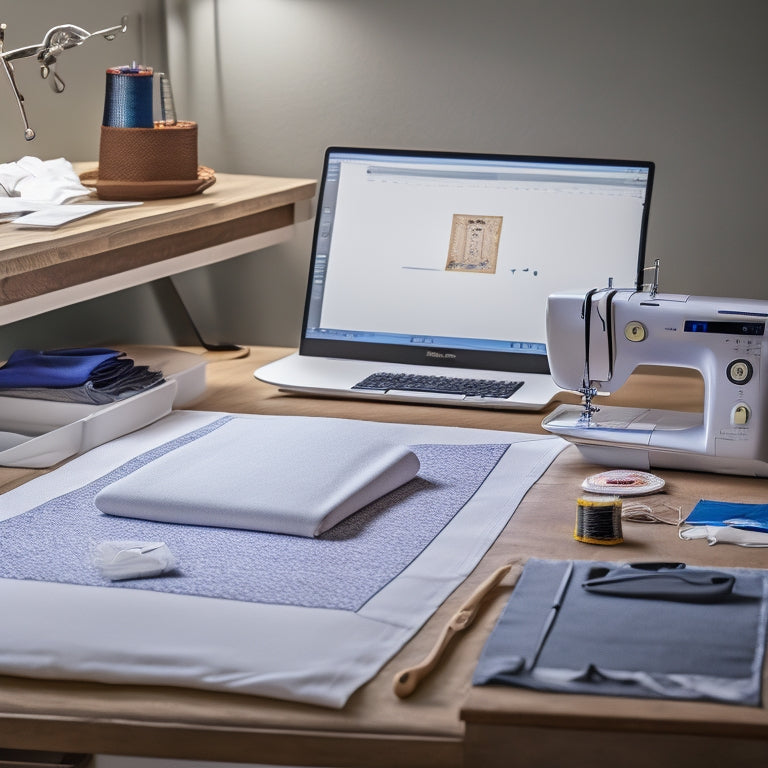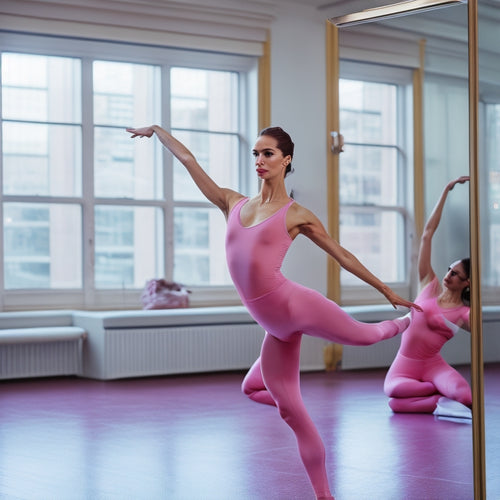
Revamp PDF Sewing Patterns With Copy Shop Ease
Share
You can revamp your PDF sewing patterns to achieve copy shop ease by streamlining the conversion process and optimizing pattern layout for a seamless stitching experience. Start by editing your PDF patterns using SEJDA's tools, focusing on perfect alignment and refining the layout. Then, convert your edited PDF to JPEG for flexibility, adjusting slide dimensions and organizing pages with ease. Next, create a Copy Shop print file using PDF Stitcher, selecting the right file, page range, and margins. Finally, finalize your layout, adjust dimensions, and save your new PDF - and you'll be on your way to achieving professional-looking patterns with minimal effort, with even more efficiency and precision waiting to be uncovered.
Key Takeaways
• Utilize SEJDA's PDF editing tools to refine pattern layout and alignment for seamless stitching.
• Convert edited PDF patterns to JPEG format for flexibility and easy organization.
• Create a Copy Shop print file using PDF Stitcher, optimizing layout and margins for projector use.
• Streamline the conversion process by focusing on pattern organization, efficient layout, and removing instructions.
• Finalize the layout using PDF Stitcher, adjusting dimensions to accurate scale and saving in a compatible format.
Editing PDF Patterns for Ease
To revamp your PDF sewing patterns, start by editing the original file using SEJDA's PDF editing tools. These tools allow you to add, delete, or reorder pages with ease. Mastering these editing techniques is essential for achieving perfect pattern alignment.
Use the ORGANIZE tool to add blank pages, remove unnecessary instructions, and reorder pages to your liking. Avoid cropping with the tool, and instead, focus on refining your pattern layout. By doing so, you'll guarantee a seamless stitching experience when using a projector.
With SEJDA's editing tools, you'll be able to achieve professional-looking patterns with minimal effort.
Converting PDF to JPEG Format
You're ready to take your edited PDF pattern to the next step by converting it into JPEG format, which allows for greater flexibility and precision in your sewing project.
To achieve this, you can utilize a website for free PDF to JPEG conversion. Save the PDF with specific layers for different views, then open Microsoft PowerPoint and create a blank slide. Adjust the slide dimensions to 36in width and 56in height, and drag and drop the JPEG images of pattern pages into PowerPoint.
This image conversion technique enables you to organize and align the pages within the slide layout with ease.
Creating a Copy Shop File
With your edited PDF pattern in hand, it's time to create a Copy Shop print file that's optimized for use with a projector. This step is essential in maximizing efficiency and ensuring pattern organization.
To create the file, you'll need to use a tool like PDF Stitcher. Here's what you need to do:
- Download and open the PDF Stitcher tool.
- Select your file, add the page range, columns, rows, and margins.
- Generate the PDF file for use with a projector.
Optimizing Pattern Conversion Process
Efficiency is key when redesigning PDF sewing patterns, and optimizing the conversion process is essential to saving time and reducing frustration. To achieve this, focus on pattern organization and efficient layout. By doing so, you'll streamline the process and ensure a smooth shift from PDF to JPEG. Here's a breakdown of the key steps:
| Step | Task | Tool |
|---|---|---|
| 1 | Convert PDF to JPEG | Online converter or SEJDA |
| 2 | Edit and organize pages | SEJDA or Microsoft PowerPoint |
| 3 | Add blank pages and remove instructions | SEJDA |
| 4 | Generate new PDF file | PDF Stitcher |
| 5 | Test and refine the pattern | Your expertise |
Finalizing Your Stitching File
Now that your pattern pages are organized and edited, it's time to finalize your stitching file by creating a new PDF that's optimized for use with a projector.
To do this, you'll need to adjust the layout and dimensions of your file. Here are three key steps to follow:
-
Finalizing layout: Use the PDF Stitcher tool to create a new PDF with the correct page layout and order.
-
Adjusting dimensions: Confirm the PDF is set to the accurate scale and dimensions for your projector.
-
Saving the file: Preserve the new PDF in a format that's compatible with your projector, like a high-resolution JPEG.
Frequently Asked Questions
Can I Use PDF Stitcher to Resize My Sewing Pattern Pages?
'Cut to the chase' and explore software options for pattern resizing, like SEJDA or PDF Stitcher, which can help you resize pages while maintaining image quality; consider converting files to JPEG for best results.
How Do I Avoid Image Distortion When Converting PDF to Jpeg?
When converting PDF to JPEG, you'll avoid image distortion by maintaining aspect ratios, using high-quality conversion tools, and adjusting slide dimensions precisely, ensuring your pattern pages remain crisp and accurate for seamless stitching.
Can I Use Other Software Besides SEJDA for PDF Editing Tasks?
You're not married to SEJDA, and can explore alternative software options for PDF editing tasks. Try SmallPDF, PDF-XChange Editor, or Adobe Acrobat for resizing pages and more, but keep in mind PDF Stitcher's unique benefits.
Why Do I Need to Add Blank Pages to My PDF Pattern Layout?
When editing your PDF pattern, you need to add blank pages for proper stitching, ensuring a seamless print layout; this essential step in layout design allows for efficient printing, and you'll appreciate these printing tips when working with your projector.
Is It Necessary to Test the Final Pattern Before Using It With a Projector?
As you prepare to project your revamped design, envision a seamless sewing process. Yes, it's essential to test the final pattern before using it with a projector, ensuring accurate resizing with the PDF Stitcher and avoiding costly mistakes.
Related Posts
-

Hip Hop Dance Apparel for Style and Function
Hip hop dance apparel combines style and functionality, so you can move with confidence and flair. Look for breathabl...
-

Dance Practice Wear Picks for Maximum Comfort and Performance
When choosing dance practice wear, you want gear that optimizes comfort and performance. Opt for moisture-wicking fab...
-

Ballet Cut File Set: Versatile Designs Available
The Ballet Cut File Set offers a wide-ranging collection of versatile designs available in multiple formats, includin...


